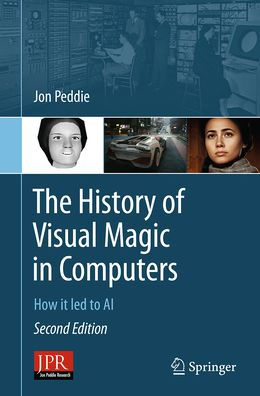The roots of 3D graphics in computers lie in practical applications, like representing automotive designs and illustrating the structure of molecules. Over time, these techniques evolved, expanding to visualize simulated data and create artistic representations of imaginary worlds. The goal was, and still is, to create images that feel real, overcoming the visual cues that might make a viewer question the authenticity of what they're seeing.
To achieve realism, developers had to find ways to work around the limitations of early computers. They exploited the characteristics of the human eye and brain, developing clever visual techniques to simulate reality. This involved harnessing the way people perceive depth and movement and using tricks to create a convincing sense of three dimensions. In this fully revised version, The History of Visual Magic in Computers traces how in the 2020s AI-enabled real-time ray tracing became common and an expected capability.
The journey of 3D graphics is a long and collaborative effort. Thousands of individuals, over thousands of years, have made crucial discoveries in mathematics and science, laying the groundwork for these immersive 3D experiences. The story of 3D graphics is a testament to the collective efforts of these individuals, pushing the boundaries of what is possible and today there is a new partner in the process—AI.
It traces back to the earliest understanding of three-dimensional space, followed by the development of foundational mathematical concepts to explain and construct 3D worlds. This history spans from the days of mechanical computers to the modern age of tablets and smartphones and ending up with AI enhancements. There have been periods where breakthroughs in computer graphics seemed to happen all at once, leading to exciting developments in algorithms and techniques. As our understanding of how to draw lines and create realistic images improved, 3D controllers for display hardware emerged, paving the way for immersive technologies like stereovision, virtual reality and enhanced image processing using AI.
The roots of 3D graphics in computers lie in practical applications, like representing automotive designs and illustrating the structure of molecules. Over time, these techniques evolved, expanding to visualize simulated data and create artistic representations of imaginary worlds. The goal was, and still is, to create images that feel real, overcoming the visual cues that might make a viewer question the authenticity of what they're seeing.
To achieve realism, developers had to find ways to work around the limitations of early computers. They exploited the characteristics of the human eye and brain, developing clever visual techniques to simulate reality. This involved harnessing the way people perceive depth and movement and using tricks to create a convincing sense of three dimensions. In this fully revised version, The History of Visual Magic in Computers traces how in the 2020s AI-enabled real-time ray tracing became common and an expected capability.
The journey of 3D graphics is a long and collaborative effort. Thousands of individuals, over thousands of years, have made crucial discoveries in mathematics and science, laying the groundwork for these immersive 3D experiences. The story of 3D graphics is a testament to the collective efforts of these individuals, pushing the boundaries of what is possible and today there is a new partner in the process—AI.
It traces back to the earliest understanding of three-dimensional space, followed by the development of foundational mathematical concepts to explain and construct 3D worlds. This history spans from the days of mechanical computers to the modern age of tablets and smartphones and ending up with AI enhancements. There have been periods where breakthroughs in computer graphics seemed to happen all at once, leading to exciting developments in algorithms and techniques. As our understanding of how to draw lines and create realistic images improved, 3D controllers for display hardware emerged, paving the way for immersive technologies like stereovision, virtual reality and enhanced image processing using AI.

The History of Visual Magic in Computers: How it led to AI
550
The History of Visual Magic in Computers: How it led to AI
550Paperback(Second Edition 2025)

Product Details
| ISBN-13: | 9781447175520 |
|---|---|
| Publisher: | Springer London |
| Publication date: | 12/19/2025 |
| Edition description: | Second Edition 2025 |
| Pages: | 550 |
| Product dimensions: | 6.10(w) x 9.25(h) x (d) |
